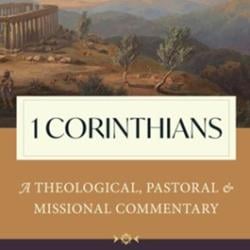Recently, I caught up with J.W. Phillips, the author of Pursuing Fellowship: By Activating the One Another Principles.
Here’s the interview.
Pursuing Fellowship, volume one, looks to be a meaty book. Instead of asking, “what is your book about,” I’m going to ask the question that’s behind that question. And that unspoken question is, “how are readers going to benefit from reading your book?”
J. W. Phillips: I am concerned, Frank, that whenever God’s people are given a pabulum portion of what was supposed to meaty truth, the church eventually weakens. So, yes, this book is meaty, but it’s not academic. The language is simple; the truths presented are practical.
This book offers a vision-casting view of fellowship and a Scripture-driven analysis of the dynamics that make it work. Although fellowship is a major area of church life, most seminaries, bible schools, and churches, don’t offer a scriptural study of this very important subject. Without such a study, the likelihood is great that we will slip into error and therefore miss in life what could have been, and should have been, a major contribution to our spiritual welfare.
One wonders if the lack of scriptural study is due to the assumption that we all kind of know what fellowship really is. If such an assumption exists, it is almost always false. Because natural thoughts—with all of its unnoticed counterfeits and seemingly right substitutes to the authentic—often replace God’s truth until a scriptural study has been undertaken. It is only then that the fog lifts, the shadow vanishes, and the haze of misperception dissipates.
The best way to understand the dynamics of biblical fellowship is to study the “one another” statements in the Bible. There are fifty-eight of these statements (thirty when discounting duplicates and nonchurch references). These thirty “one another” statements can be divided four ways: 1) the supportive statements; 2) the confrontative statements; 3) the preventive statements and 4) the prohibitive statements. When considered in their totality, a cameo-sharp picture of what constitutes a biblical fellowship comes finally into view. Volume one deals with the supportive statements.
If a survey constructed from the “one another” statements in the Bible were administered in churches today, respondents would indicate that not too much of what the Bible tells us to do with one another is actually happening. One reason it isn’t happening is because we never intended it would. We never seriously purposed that certain scriptural objectives would become a part of our experience. Extending this neglect, we never created the opportunities, never set forth the strategies, whereby these fellowship objectives could be pursued. The major benefit of this book is its articulation of a plan for implementing biblical fellowship.
Tell us a bit about the experiences that shaped the insights in the book.
J. W. Phillips: A part of my clinical training involved leading and participating in small groups. This training gave me firsthand awareness of a level of caring and problem-solving that I seldom saw in church groups. But because I distrust importing secular models to church, I began a study of Scripture, not sure where it would lead me, yet determined at the outset to follow only what Scripture set forth. I had no interest in developing a hybrid (secular/scriptural) model.
How is your book different from the many other books on the subject of fellowship and church?
J. W. Phillips: There are more than two thousand books on small groups and from these multiple paradigms of what a small group should be. The distinct impression engendered by many small group enthusiasts is that no agenda is to be preferred to another. This cafeteria of options is even celebrated for its creativity and vaunted uniqueness. But the intense support needed to achieve an intimate walk with the Lord, and to promote a personal holiness contagious in its appeal, requires a more thoroughgoing effort than what most of these groups have envisioned.
With quick acquiescence these “one another” statements are true, we have read right past them, without giving them much thought, and without searching to see how a church should implement them. Although mentioned by the church, these statements have not been examined by the church. And so—without debate or even much reflection—the “one another” statements have been routinely set aside.
Why would the church do something like this? These statements, after all, instruct, command, convey vision, and are of such importance that every one of them is further explained by other passages of Scripture. So shouldn’t definitive statements like these be examined? Instead of reading someone’s ideas about small groups, attention should be fixed first on what God says about fellowship. A failure to do this risks an outcome where what happens in small groups bears little resemblance to biblical fellowship.
In making this study, I was aware of several books that presented some of the “one another” statements but omitted others. So I had to determine if many of these “one another’ statements overlap each other and therefore a partial presentation of them is sufficient. I discovered this was not the case. Each “one another” statement makes a distinct contribution to our understanding of biblical fellowship.
Give us two or three insights from the book that would be helpful to Christians.
J. W. Phillips: Every chapter in this book provides scriptural “how-to” strategies for implementing the “one another” principle set forth. As well, there is an 85 page Group Leader Guide on Kindle (for each volume) to assist group leaders and fellowship ministry directors. To reflect more broadly, I’ll surface one fellowship insight related to teaching and another fellowship insight related to evangelism.
First teaching. Just getting the Word out isn’t enough; we must also get it in. The task of getting the Word in is to be shared by the individual believer, the Holy Spirit, and a fellowship group. As with any farm or garden, though, this requires considerable effort and attention being given to “the soil”—that is, to the current condition of one’s heart.
If one were to cast seed upon a plot of land where little seemed to grow, what would he do—keep throwing out more seed? No, he would focus on preparing the land. And he would do this by clearing away all debris, uprooting rocks and stumps, plowing the soil, pulling the weeds, supplying the nutrients, then protecting the land from encroaching pests. Actually, throwing out the seed is the easy part. All that it takes to nurture growth is much harder.
Can you see where fellowship fits in this picture? Fellowship is where the needed concentration is given to the “soil,” the current condition of one’s heart. Remove this effort from the process and one has to wonder about how intelligently spiritual growth is being pursued. Not to recognize how formidable the flesh is by singularly focusing on the Bible, and not specifically focusing on the inner lives of church members, is biblically impossible to defend. As one writer put it, “Christians waging secret war against the flesh have no chance of winning . . .”
These “one another” principles—direct, didactic statements that command and not just suggest—lay out a comprehensive approach for achieving maximum results from preaching and teaching, results that couldn’t be achieved unless these strategies for neutralizing the flesh and assisting the born-again spirit were implemented. God never intended that the pastor should just throw out seed. If a farmer did only that, his results would be meager.
With regard to evangelism and the contribution fellowship makes to that, we find Jesus saying (in John 13:34-35) that love among his disciples is the very badge of Christianity and that their oneness (John 17:21), if exhibited, would prove he is the Messiah. These words are simply amazing!
Talk about a litmus test. If the world could see what is happening in your church and mine, would it see a reality so supernatural in character that only God could produce it? Or would it see something not all that different from the friendships that exist in the world? The probative value of questions like these is enhanced by putting the spotlight exactly where it needs to be put—on the lives of people who call themselves Christians. A listing of church programs and a recitation of church doctrine won’t tell us what we need to know. What will tell us if the gospel is working, and if the Word is actually making a difference, is the quality of relationships believers are having with one another.
There must be a difference, a real and noticeable difference, one so unique in kind and powerful in impact the world will never be able to ignore it. Defining further what this difference needs to be, Francis Schaeffer said the church must exhibit both a practical holiness and visible love. But without the Spirit, Schaeffer writes, there will either be holiness without love (legalism) or there will be love without holiness (sentimentalism).
Predictably, the world is turned off by both of these—the rigidity and frigidity of legalism and the mush and gush of sentimentalism. However, if the church, in the power of the Spirit, ever comes to exhibit both holiness and love, that will cause this old world to find favor with the church. A favor so strong that multiplied millions will be magnetized toward this fellowship—and, drawn by what they see, they will come to Jesus to receive this life for themselves!
What do you hope readers will walk away with after they finish the book?
J. W. Phillips: By studying a different “one another” statement each week, I want readers to have a more biblical vision of fellowship than they do. Most don’t even know what they don’t know. And there’s a consequence for that. For without a vision—what happens? People perish. This holds true not only in the sense of ultimate destiny, heaven or hell, but in other ways, too, whereby a godly goal languishes in disappointing outcomes, all because the biblical vision was never in place.
Truth is, many small groups become a grind. Lacking vision (and therefore an absence of key dynamics), these groups fall into a rut. Motivation decreases, often because too little is being accomplished. Therefore, the decision to “go to group” each week is made only on the basis of obligation. Get the right vision activated, though, and the trajectory of spiritual growth will elevate dramatically.
Tell us about the other books in The Pursuing With Passion series and explain each one is about.
J. W. Phillips: Thank you for asking. The first book, Pursuing a Divine Life, explains what the new nature is, how it was created, how the new nature is received, how it is released, how its release can be sustained, and how the new nature can transform all those functions of the soul (our mind, will, and emotions) that have long been influenced by an alien force, what Scripture calls the flesh. Originally, I didn’t plan to offer this book first, but decided to do so because every other book in this series has new nature teaching threading through it.
Pursuing God, volumes 1 and 2, set forth the stages and strategies for experiencing Jesus from the moment of conversion to the most advanced stage of spiritual maturity. This trajectory of teaching also pinpoints and problem-solves the spiritually stuck phenomenon. Many people reach a juncture in their journey with Jesus and don’t know what to do next. Their spiritual life is like swimming in thickly congealed Jell-O or running in a melting, sticky tar pit. By mapping the methods and contemplating the conditions for knowing God, sequentially and more comprehensively, the spiritually stuck phenomenon can be avoided.
What gave you the idea to write The Pursuing With Passion series in the first place?
J. W. Phillips: The idea came late, although I understood earlier on that these would be the only books I would write. The title of this series conveys my approach to all the books in it. Each book involves extensive research. My own heart was tender and teachable before the Lord, motivated first to achieve accuracy and second to offer vivid wording.
Tell us about the upcoming books in The Pursuing With Passion series and what do you hope readers will gain through each volume?
J. W. Phillips: Again, thank you for asking. The second volume on fellowship should be released in March. After that comes a book called, Pursuing the Vision. Since imagery often determines destiny, it is important to govern that which governs us, the imagination. Scripture provides extensive information about how one’s imagination relates to God, worship, temptation, depression, faith, fear, self-image, friendship, finding life’s purpose, pursuing life’s dream, and engaging others in evangelism.
Next up is Pursuing Obedience. The fact that sinning keeps winning is a lamentable legacy for many Christians. Despite renewed vows, clenched-teeth resolve, and red-eye remorse—the serpent’s hissing continues to indict—s-s-sin! What’s needed are the strategies Jesus set forth that night in Gethsemane when obedience endured its most stringent test and in the end secured its most impressive victory. These ten strategies, all set forth in the latter part of John 14, brought the greatest victory this world would ever see, even when the motivations for achieving it were under the most devastating assault.
The last book in this series is Pursuing the Good Life. Each division in this book introduces a different genre of literature in order to explain why good is more intriguing than a mystery, more daring than an adventure story, more honest than a biography, more inspiring than a hero story, and more heartwarming than a fairytale romance. The triggers, components, counterfeits, and consequences of good and evil are set forth in this book to invigorate the believer’s pursuit of the good life.
How can readers learn more about your work?
J. W. Phillips: Your interview has been helpful, Frank. Thank you. I’m not very entrepreneurial. Amazon is the only venue I’m using. Fortunately, Amazon allows the reader to see table of contents, back-of-the-book blurbs, and sample chapters. This previewing should give the reader a good idea about the contents of each book.














